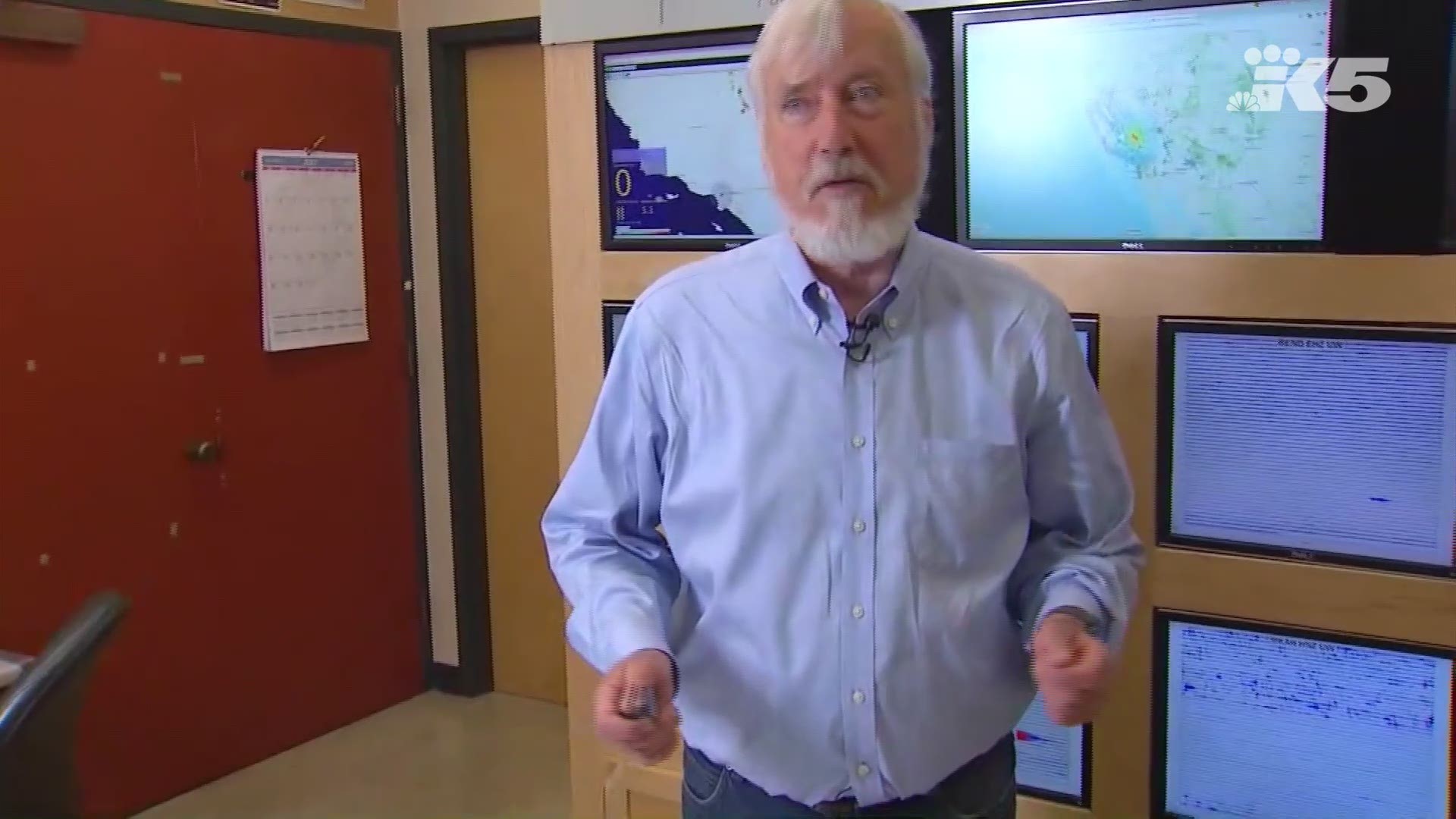A 4.6 magnitude earthquake near Monroe was followed by at least nine aftershocks Friday, the largest of which was a magnitude 3.5
Aftershocks are earthquakes that follow the largest shock in an earthquake sequence, according to the U.S. Geological Survey. Typically the larger the mainshock, the more aftershocks an area could experience and the longer they could continue.
"I wouldn’t be surprised if we don’t feel another aftershock, but it’s very possible we will," said Bill Steele, Pacific Northwest Seismic Network director of outreach and information services.
Here's the timeline of the Monroe quake and subsequent aftershocks, according to USGS:
- 2:51 a.m. - 4.6 earthquake
- 2:53 a.m. - 3.5 earthquake
- 2:56 a.m. - 1.7 earthquake
- 2:59 a.m. - 0.9 earthquake
- 3:28 a.m. - 1.6 earthquake
- 3:50 a.m. - 1.5 earthquake
- 4:24 a.m. - 1.2 earthquake
- 4:25 a.m. - 1.7 earthquake
- 5:42 a.m. - 0.8 earthquake
- 6 a.m. - 1.1 earthquake
- 7:12 a.m.- 1.6 earthquake
- 8:06 a.m. - 1.1 earthquake
- 12:20 p.m. - 1.1 earthquake
The Monroe earthquake was 24.3 kilometers, or about 13.5 miles, deep. At that depth in the crust, Steele said aftershocks typically die off sooner than if the earthquake were closer to the surface.
"Now that said this could also trigger a larger earthquake," Steele said. "If there’s enough strain built in the region and conditions are just right, one of these little aftershocks could take off and become its own big earthquake, and then we would be looking at this as a foreshock."
Foreshocks are relatively smaller earthquakes that precede the biggest earthquake in a series, according to USGS.
Steele cautioned it wasn't likely that would happen, but said there is a greater chance over the next 24 hours of a larger earthquake occurring than background.
"That’s a very small probability, but it’s certainly real," Steele said.

